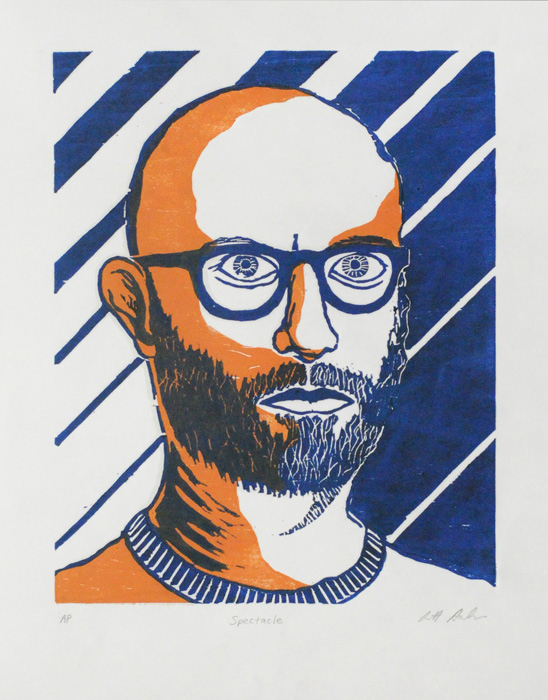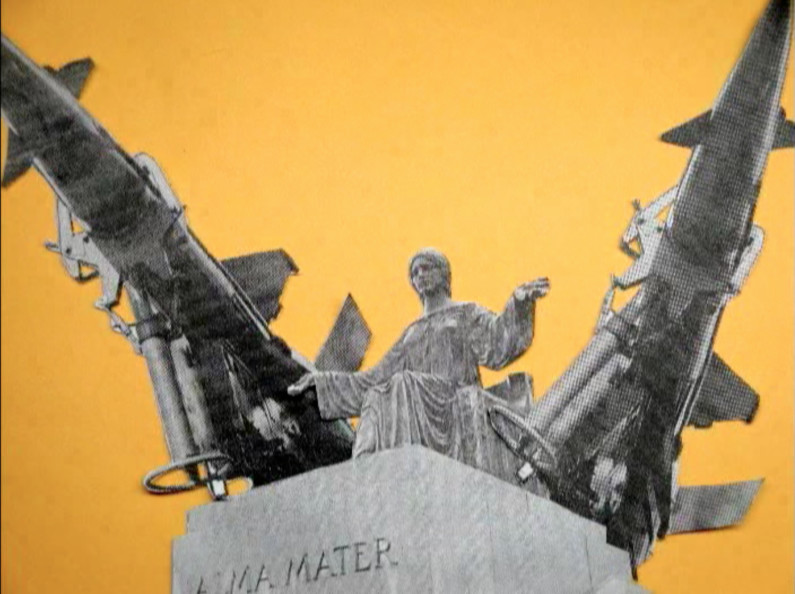TCNJ to Present More Than 20 Videos by Contemporary Cuban Artists
What: Video Cubano, a collection of 22 videos from 18 Cuban artists
When: October 23 – December 15, 2013 (Gallery hours: Tues, Wed, & Thurs 12pm-7pm, Sun 1pm-3pm)
Where: TCNJ Art Gallery, AIMM Building, First Floor, Space 115
www.tcnj.edu/artgallery
Hamlet Lavastida (b. 1983), Reflexión, 2009. DVD 3:05, courtesy the artist and The 8th Floor.
The current exhibit in The College of New Jersey’s Art Gallery features videos by artists from our island neighbor to the south. The goal of the show is to let Cuban art permeate the sometimes impenetrable wall that exists between Cuba and the United States, giving us a glimpse at life within the socialist state, and providing Cuban visionaries the opportunity to share their stories.
The exhibition’s official pamphlet contains a brief interview with one of the artists, Geandy Pavón, which sheds light on the power of art and anti-government sentiment in Cuba. Pavón recalls that on the opening night of his first exhibition in 1988, a multitude of people showed up, including many who had no particular interest in art, simply because they had heard that the works “portrayed Castro and some of the issues that were taboo in the country at the time.” But before the doors could open, the state authorities intervened, prohibiting the controversial works from being shown. In response, the artists extricated their pieces and displayed them in a well-lit storefront, an act which became “a public catharsis” for scores of frustrated Cuban citizens who could not freely and openly express their political views.
Geandy Pavón’s contribution to Video Cubano is a piece called “Timing Revolutions,” in which we see a pair of hands folding a photograph of a fatally wounded Ché Guevara into an origami elephant, perhaps signifying a Hinduism-inspired reincarnation of ideals. Sandra Ramos gives us a heart-pounding relay race, or “Carrera de Relevo” in which hand-drawn, cartoony figures pass a green baton inside a cavernous stadium filled with roaring fans. The baton starts off in the hands of a Renaissance prince, who runs it to Uncle Sam, who passes it to Hitler, then to Lenin, and then to Fidel Castro, who, being shot by an unseen bullet, collapses and tosses the baton precariously to a young girl dressed in pink. Ramos’s animation suggests the notion that, after an age of shifting political ideologies, the power of the idea is finally in the hands of the people.
Jeosviel Abstengo-Chaviano’s “Prendas Corpus” is a series of clips where various individuals (whose faces are off-screen) strap slabs of raw meat onto different parts of their bodies, trying to assimilate the extra flesh in order to smuggle it to their destination. “Concierto” by Analía Amaya is a beautiful rendition of nighttime scenes in Cuban neighborhoods, in which the vistas are built piece-by-piece to a moving classical score reminiscent of the climax of a dramatic film. And Alexandre Arrechea’s “Making Room” features a split screen: on the right a wrecking ball demolishes a historical building in black and white, while simultaneously on the left, a dark-skinned man dons multiple pairs of pants in an ambience of electronic trance music.
One of the more powerful videos is “La Ronda” by Adonis Flores, in which a Cuban soldier dressed in camouflage prowls the streets of an affluent city on all fours, wearing five-fingered black rubber boots on his hands to match the conventional boots on his feet. Onlookers cautiously move out of the way as he struggles by, some staring with curiosity and others aghast. A symbolically loaded piece comes from Amilkar Feria Flores, whose work “Tengo una idea” shows a hand lighting a match against a black background. The match then ignites a row of tiny human figures standing arm in arm, whose heads are themselves made of matches which promptly burst into flames, signifying the incendiary spread of ideas and the potentially destructive aftermath.
“Invencible” by Ricardo Miguel Hernandez is a frantic scene of shaky handycam footage showing a man darting behind barricades, tossing Molotov cocktails at an unseen enemy. We are immersed in the din of explosions, helicopters, gunfire, and sirens, yet when the character finally gazes out from behind a rusty barrel, we see that there is no assault, just an empty field in front of him. Finally, “Diglosia” by Ernesto Leal is a compilation of words filmed from different billboards, signs, and advertisements, which form the sentences of a political discourse. The words come from different public places throughout Cuba; some seem old and withered, some are new, some zoom in or out, others are out of focus. At the outset of the video, Leal provides a definition of the term “diglosia,” which represents the divergence of the two forms of a language, one written and one spoken. When we interpret this definition in the context of the piece, we realize that a duality is set up between the language of pro-government propaganda, and the actual conversations that take place in Cuban homes regarding the country’s social and political situation. One of the (translated) phrases reads, “Today’s Cuban no longer believes in the happy utopia of a supreme and immortal socialism.” We see that a widening disparity exists between the communist party’s constructed public image and the living opinions floating in the minds of the Cuban people.
The works of Video Cubano are the vehicles of dissemination for a generation of artists acting as the leaders of a new ideological movement. Through their images and sound, these artists aim to illuminate diverse perspectives, influence the world’s perception of Cuban society, and fight for the right of the Cuban people to be global citizens.

